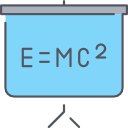
Text
Marine Conservation Ecology
The oceans have traditionally been conceived of as boundless and beyond the realm of significant human impacts; the great fisheries of the world were once considered as essentially limitless. By 1883, even though economic pressures on fisheries were already being felt. T.H. Huxley boldly announced that any tendency to over fishing will meet with its natural check. We now know that these conceptions are false. Worldwide, fisheries are in decline perhaps irreversibly in some cases and marine habitats have become extensively degraded. Marine conservation is no longer an option it is a pressing necessity. However despite many well intentioned but generally disjointed efforts marine conservation is not yet firmly based on ecological foundations. Nevertheless, we can recognize general principles concepts and even paradigms , and use these as an experimental basis for planning frameworks and decision making. This in turn requires ecological classifications. The history of science ( whatever the discipline ) shows how the development of comprehensiv theoretical systems seems to be possible only after a preliminary classification has been achieved (nagel ,1961 ). This is what this book is all about, but there is little here that is canonical. It has often been said that biology has only one theory evalution by natural selection . If this is so, then conservation has no real theories at all , it is a pragmatic science. We, the authors , simply hope to present a practical set of approaches to marine conservation that can be used as the basis of frameworks for planning.
We cannot protect the whole of the marine environment some parts of it will always be open to exploitation and disturbance due to resource use by humans. Therefore, just as in terrestrial conservation . Choices need to be made as to what will be protected. But how, on what basis, according to what criteria , do we select those pieces of the ocean that we should protect so as to maximally preserve ( or at least efficiently protect ) the greatest proportion of the components of marine biodiversty ? This is the prime thrust and interest of this book.
Ketersediaan
| 0000015164 | 504.54 ROF m cop.1 | My Library (koleksi baru) | Tersedia |
| 0000015165 | 504.54 ROF m cop.2 | My Library (koleksi baru) | Tersedia |
| 0000015166 | 504.54 ROF m cop.3 | My Library (koleksi baru) | Tersedia |
| 0000015167 | 504.54 ROF m cop.4 | My Library (koleksi baru) | Tersedia |
| 0000015168 | 504.54 ROF m cop.5 | My Library (koleksi baru) | Tersedia |
| 0000015169 | 504.54 ROF m cop.6 | My Library (koleksi baru) | Tersedia |
Informasi Detail
- Judul Seri
-
-
- No. Panggil
-
504.54 ROF m
- Penerbit
- New York : Earthscan., 2011
- Deskripsi Fisik
-
439 hlm; 29,5 cm
- Bahasa
-
English
- ISBN/ISSN
-
978-1-84407-883-7
- Klasifikasi
-
504.54
- Tipe Isi
-
-
- Tipe Media
-
-
- Tipe Pembawa
-
-
- Edisi
-
-
- Subjek
- Info Detail Spesifik
-
-
- Pernyataan Tanggungjawab
-
-
Versi lain/terkait
Tidak tersedia versi lain
Lampiran Berkas
Komentar
Anda harus masuk sebelum memberikan komentar
 Karya Umum
Karya Umum  Filsafat
Filsafat  Agama
Agama  Ilmu-ilmu Sosial
Ilmu-ilmu Sosial  Bahasa
Bahasa  Ilmu-ilmu Murni
Ilmu-ilmu Murni  Ilmu-ilmu Terapan
Ilmu-ilmu Terapan  Kesenian, Hiburan, dan Olahraga
Kesenian, Hiburan, dan Olahraga  Kesusastraan
Kesusastraan  Geografi dan Sejarah
Geografi dan Sejarah